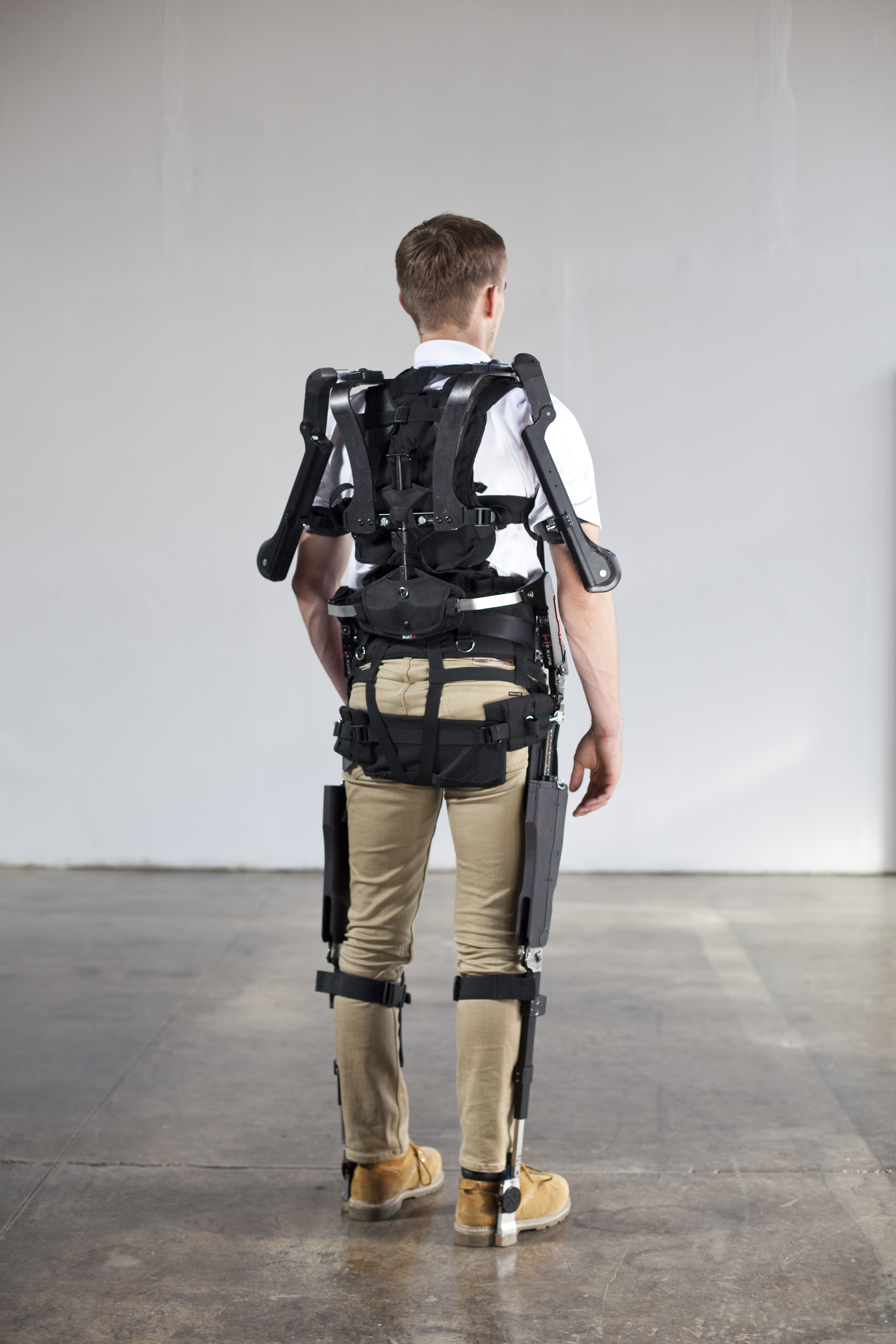
suitX, a California-based robotics company designing and manufacturing medical and industrial exoskeletons, recently announced the official launch of MAX, a flexible exoskeleton that can be adapted to a variety of workplace tasks. MAX comprises three exoskeleton modules: backX, shoulderX and legX. Each module can be worn independently and in any combination depending on need. All modules intelligently engage when you need them, and don't impede you otherwise.
MAX's lightweight design and versatile modules bring support to strenuous activities including lifting, stooping, bending, squatting and overhead work, allowing workers to be more productive by reducing fatigue and costly workplace injuries. This new development in the suitX portfolio follows the introduction of Phoenix, the suitX lightweight medical-grade exoskeleton designed to aid people with mobility disorders.
Liberty Mutal Research Institute for Safety reports that, in 2013, overexertion ranked first among the leading causes of disabling injury. Lifting, pushing, pulling, holding, or carrying objects cost businesses $15.08 billion in direct costs and accounted for nearly a quarter of the overall national burden.
Assistive bionics technologies such as MAX have the potential to improve quality of life, decrease at-work injury claims, and create a safer, more productive workplace environment, according to the company. A recent study by researchers at the University of California, Berkeley showed the backX component of the MAX system augmented users with an average 60 percent reduction in muscle activities at four of the lower back muscle groups.
MAX and its products are expected to benefit workers in many industrial settings including factories, construction, airports, assembly lines, shipbuilding, warehouses and delivery services . MAX is comfortable; workers can wear MAX modules all day and continue to perform everyday tasks without any impairment.
"The MAX solution is designed for unstructured workplaces where no robot can work as efficiently as a human worker. Our goal is to augment and support workers who perform demanding and repetitive tasks in unstructured workplaces in order to prevent and reduce injuries," explained Dr. Homayoon Kazerooni, founder and CEO, suitX.
"We have created responsive and affordable technologies to augment workers' strength while leaving the worker in control of the operation. MAX is designed to support workers during the repetitive tasks that most frequently cause injury. It's not only lifting 75 pounds that can hurt your back; it is also lifting 20 pounds repeatedly throughout the day that will lead to injury," said Kazerooni.
Countless field evaluations conducted at construction, material handling, shipbuilding, foundry, and airport baggage handling sites in the US and Japan, as well as extensive research in Berkeley led to the development of MAX modules. Effective and comfortable, all MAX modules augment workers and give them the means to work more safely and productively. The initial funding to develop MAX was provided from various sources, including a grant from National Science Foundation under a National Robotics Initiative (NRI) program announced by the White House in 2011. MAX won two Saint-Gobain NOVA Innovation Awards for its intelligent design, effectiveness and affordability.
"We believe MAX will become the exoskeleton technology gold-standard in reducing on-the-job injuries and improving workplace quality of life," said Kazerooni.
MAX Product Line and Features:
- backX augments wearers and reduces forces and torques on a wearer's lower back region
- legX is a knee support exoskeleton that allows the wearer to squat repeatedly or for long periods of time, reducing the forces on the knee joint and the quadriceps
- shoulderX is an industrial arm exoskeleton that augments the wearer by reducing forces at the shoulder and enables the wearer to perform chest-to-ceiling level tasks for longer periods of time, with less effort
- Adjustable size -- fits a wide range of sizes (5-95 percent of human dimensions)
- Low profile -- follows user's body to fit in tight spaces and changing environments
- Durable -- dust and waterproof
Related Glossary Terms
- fatigue
fatigue
Phenomenon leading to fracture under repeated or fluctuating stresses having a maximum value less than the tensile strength of the material. Fatigue fractures are progressive, beginning as minute cracks that grow under the action of the fluctuating stress.
- robotics
robotics
Discipline involving self-actuating and self-operating devices. Robots frequently imitate human capabilities, including the ability to manipulate physical objects while evaluating and reacting appropriately to various stimuli. See industrial robot; robot.







